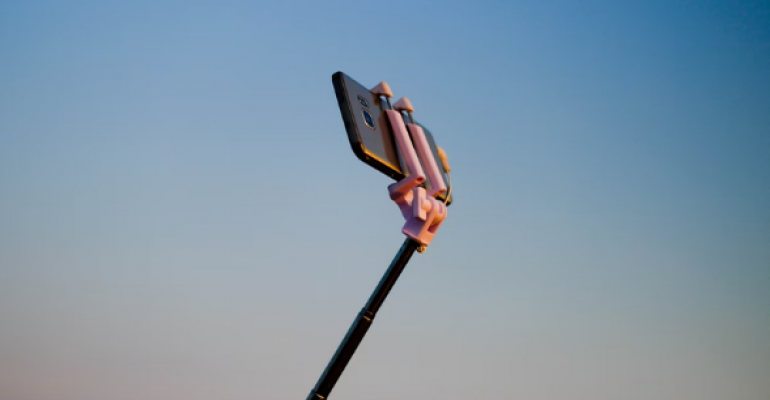
Selfie selfie
A miracle of architecture and engineering, the impossibly large dome of this museum that was a mosque that was a cathedral has dominated the shoreline of the Bosphorus for 1,500 years and witnessed the rise and fall of Roman, Byzantine and Ottoman empires. You’d think that the sheer magnificence of the Hagia Sophia would be enough – that the hordes who come to see it would be satisfied with, well, seeing it. There is so much history to soak up, and the scale of that history, alongside the physical massiveness of the building, means it cries out simply to be looked at, and wondered at. But at every turn stood a tourist with a selfie stick – not looking at the building, not sucking up its history, not musing on the geo-political significance of the place, but placing themselves at the centre of photo after photo. Rushing from mosaic to archway to viewpoint, pulling the duck-face, filling the frame. Hagia Sophia means ‘Holy Wisdom’, but this was unholy folly.
Our selfie-obsession is troubling, and comical. As novelist Howard Jacobson neatly puts it, “Absurdities meet in the very idea of a selfie stick, not the least of them being the illogicality of adding photographic equipment to a device whose virtue resides in its being lighter than a credit card and small enough to fit into a fob pocket. After the selfie stick for your mobile, how about a tripod, a set of studio lights and a reflector kit? How long before we can’t go on holiday without a camera assistant to carry our smartphone paraphernalia for us? The more we advance, the more we decline.”
Jacobson is overstating his case, but the selfie has given us the technical support necessary to make us all the stars of our own personal movie. Every frame must have ‘my face’ at its centre. Without my face, no scene is complete and nothing is valid.
We are drawn to faces like moths to a flame, but never have human beings been so familiar with their own faces. I often wonder what it would be like to live in a culture without photography, or even without effective mirrors – as has been the case for most cultures up until the modern era. We see our faces everywhere, not only in our selfies, but in the mirrors that dot our homes, in the reflective glass of shop fronts, in the paintwork of cars. In urban life it is impossible not to look at ourselves again and again every day. I don’t know how it could be proved, but this must have affected our mass psychology. Perhaps all the evidence we need is that in the US $8 billion is spent each year on cosmetics.
The more we see our faces the more conscious we become of our appearance and the more we seek to edit it – whether by makeup or photoshop. Sometimes I look at my daughters’ Facebook timelines and am struck by all the selfies of their teenage friends: the sucked-in cheeks, pouting lips, carefully tilted heads – the duck-face. The contemporary teenager is more aware of how she looks than has ever been the case because she sees herself all the time, and has to maintain a selfie-ready pose all the time.
This self-consciousness is troubling. It is not difficult to imagine that it might lead to the kind of introspection that could keep us from functioning in community as we are meant to do – that, in the end, like Narcissus we are so transfixed by our own image it kills us, while we die to the needs and desires of others. A resolute selfie-focus can be crippling. It is not easy always being in the spotlight, and seeking to cast a shadow so large it eclipses even the Hagia Sophia.